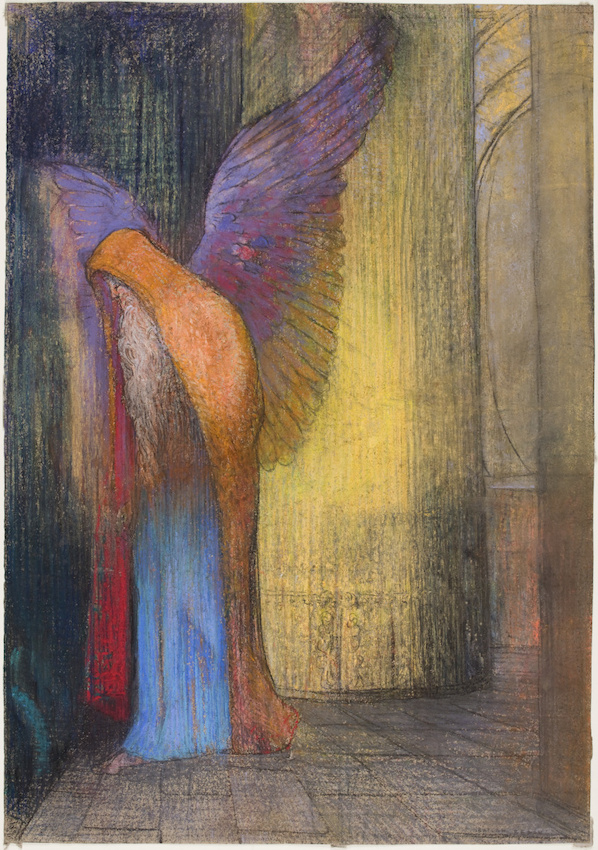Symbolism was a primarily literary movement which was first named in 1885 by Jean Moreas, who wrote the Symbolist Manifesto in 1886. (1397, Princeton) Reacting against both decadence and rigid traditional forms, symbolist poets attempted to describe subjective inner experience. They viewed symbols as synecdoches that gestured towards often-mysterious spiritual realities instead of as a one-to-one correspondence between a sign and a referent.
 "Soyez Symboliste". by Paul Gauguin for La Plume with portrait of Jean Moréas, 1891, published in La Plume, July 1, 1903 | Public Domain.
"Soyez Symboliste". by Paul Gauguin for La Plume with portrait of Jean Moréas, 1891, published in La Plume, July 1, 1903 | Public Domain.
The two main groups of symbolists were divided between France and Russia. In France, they concentrated in Paris and mostly wrote poetry. Charles Baudelaire was a major influence and Stephen Mallarme, Jean Moreas, and others were major figures. Russian symbolists shared similar ideas to French symbolists but a mostly separate genealogy, drawing from Goethe and including novels alongside poetry in their writing. Prominent figures included Vyacheslav Ivanov and Fyodor Sologub. This database also includes William Butler Yeats essay “Anima Hominis” as an author influenced by symbolism’s spiritual perspective outside of the French and Russian spheres.
Map of Symbolist Manifestos
While primarily a literary movement, symbolism also had some influence in the visual arts, including Edouard Manet and Odilon Redon.
 Old Bearded Winged Man by Odilon Redon, 1895, Musée d'Orsay | Public Domain.
Old Bearded Winged Man by Odilon Redon, 1895, Musée d'Orsay | Public Domain.
References
Ahrens, Rüdiger. Symbolism. New York, NY: AMS Press, Inc., 2000.
Goldwater, Robert. Symbolism. 1st U.S. ed.. New York: Harper & Row, 1979.
“Symbolism.” Encyclopædia Britannica Online, Encyclopædia Britannica Inc, 2020.
Wachtel, M. “Symbolism”. The Princeton Encyclopedia of Poetry and Poetics, Princeton University Press, 2012.